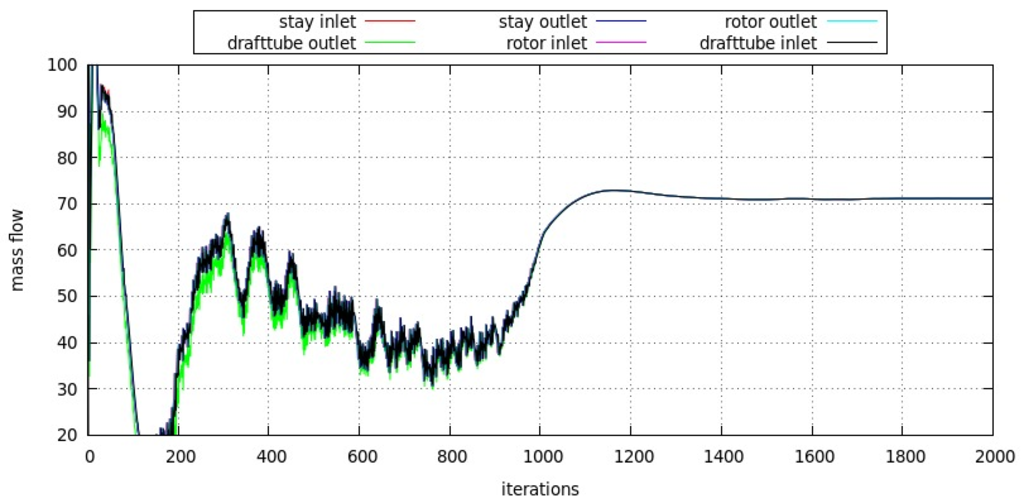Next: Model setting without an Up: Alternative formulation Previous: Alternative formulation Contents Index
On Boundary and Initial Conditions in General
- Boundary conditions are extremely important.
- OpenFOAM uses similar set-up as other solvers.
- At the inlet (flow inlet) to the computational domain total pressure are set. The rest of variables are reconstructed.
- At the outlet the static pressure is set.
- At the rigid walls velocity is set to zero.
- Multiple Reference Frame (MRF) is used for rotational components.
- For steady-state computations the initial conditions have no influence to the results.
- For steady-state computations the initial conditions just help to make the case run.
The main variables to be set are following:
The initial and boundary conditions for all variables are set in files located in directories named by numbers. Typically directory 0 is recommended to start a simulation from. Initial conditions are set in parameter internalField putting the values into the cell centers. At boundaries, initial conditions are set individually by parameter value.
Copy the initial and boundary condition from 0.org directory to 0:
# cp -r 0.org/* 0
Following table shows recommended model of boundary conditions for computed variables:
| |||||||||||||||||||||||||||||||||||||||||||||||||||||||||||||||||||||||||||||||||||||
The shortcuts from the table above have following meaning:

Figure: Kaplan turbine, distribution of pressure at the inlet using hydrostaticTotalPressure boundary condition with reference value pInletCenter $ \color{white} =97.5 m^2/s^2 $.
- fRV – flowRateVelocity prescribes fixed flow rate
- pIV – pressureInletVelocity, velocity is computed from difference between total and static pressure there a direction is normal to the patch faces
- tIKEI – turbulentIntensityKineticEnergyInlet, intensity = 0.05, corresponds to turbulence intensity 5%
- fV – fixedValue, e.g. velocity at the wall (0 0 0), or omega at inlet
- fMV – fixedMeanValue, is the same as fixed value, e.g. for pressure, but certain freedom is allowed to keep the variable average equal to meanValue
- zG – zeroGradient, the flux of the variable is zero in direction perpendicular to the surface
- kWF – kqRWallFunction is a standard wall function for k for incompressible flow
- oWF – omegaWallFunction is a standard wall function for omega for incompressible flow
- mI – mixingInterface, averaged variable is mapped from neighbour patch
- iO – inletOutlet is by default zeroGradient, but changes to fixedValue when velocity vector direction points inside the computational domain (backward flow)
See also Chapter (![]() ), where the boundary conditions are described.
), where the boundary conditions are described.
Next: Model setting without an Up: Alternative formulation Previous: Alternative formulation Contents Index





